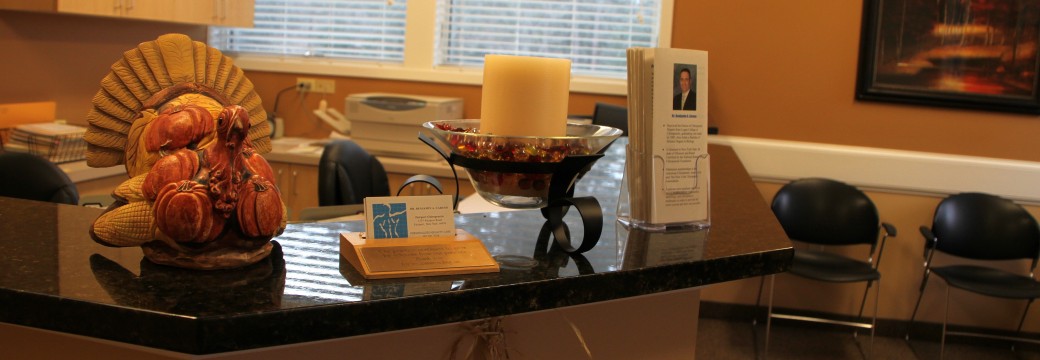- Don’t lift by bending over. Instead, bend your hips and knees and then squat to pick up the object. Keep your back straight, and hold the object close to your body.
- Don’t twist your body while lifting.
- Push, rather than pull, when you must move heavy objects.
- If you must sit for long periods, take frequent breaks and stretch.
- Wear flat shoes or shoes with low heels.
- Exercise regularly. An inactive lifestyle contributes to lower-back pain.
Healthy Spine Tips
A healthy spine is an often overlooked and essential part of a healthy lifestyle. People who suffer from back pain, particularly if it is long-term, are generally less healthy than those who do not. In fact, back pain costs are staggering not only financially, but also in terms of lost time from work and because of psychosocial problems that arise during the healing process associated with long-term back pain. Unfortunately, approximately 80-90% of the population suffers from spinal pain at some point. Because so many people suffer from spine pain, it’s important for you to try to keep your spine as healthy as possible. Following simple posture, lifting, and healthy lifestyle guidelines can help you keep your back in good shape. Get in touch with your Doctor of Chiropractic to keep your spine healthy and pain free!
Chiropractic Facts
Doctors of Chiropractic are licensed in all 50 states in the US.
DC’s have been licensed and recognized for many decades in all states, the District of Columbia and Puerto Rico.
Back and Neck Care Class
The next Back and Neck Care Class is approaching this Wednesday December 9th at 6:15pm right here in the office. Sign up this week in the office and remember guests are free to join. We look forward to seeing you!
Dr. Benjamin A. Caruso
Fairport Chiropractic
1157 Fairport Rd
Fairport, NY 14450
Chiropractic Trends
According to Research, 33.6 Million U.S. Adults Used Chiropractic Care in the Last 12 Months.
Chiropractic Treatment
The hands-on nature of the chiropractic treatment is essentially what requires patients to visit the chiropractor a number of times. To be treated by a chiropractor, a patient needs to be in his or her office. In contrast, a course of treatment from medical doctors often involves a pre-established plan that is conducted at home (i.e. taking a course of antibiotics once a day for a couple of weeks). A chiropractor may provide acute, chronic, and/or preventive care thus making a certain number of visits sometimes necessary. Your doctor of chiropractic will tell you the extent of treatment recommended and how long you can expect it to last.
Happy Thanksgiving!
The Office Would Like To Wish Everyone A Safe and Happy Thanksgiving!
Dr. Benjamin A. Caruso
Fairport Chiropractic
1157 Fairport Rd.
Fairport, NY 14450
Chiropractic Adjusment
Chiropractic adjustment or manipulation is a manual procedure that utilizes the highly refined skills developed during the doctor of chiropractic’s intensive years of chiropractic education. The chiropractic physician typically uses his or her hands–or an instrument–to manipulate the joints of the body, particularly the spine, in order to restore or enhance joint function. This often helps resolve joint inflammation and reduces the patient’s pain. Chiropractic manipulation is a highly controlled procedure that rarely causes discomfort. The chiropractor adapts the procedure to meet the specific needs of each patient. Patients often note positive changes in their symptoms immediately following treatment.
Chiropractic On The Rise
Chiropractic is the largest, most regulated, and best recognized of the complementary and alternative medicine (CAM) professions. CAM patient surveys show that chiropractors are used more often than any other alternative provider group and patient satisfaction with chiropractic care is very high. There is steadily increasing patient use of chiropractic in the United States, which has tripled in the past two decades.
Chiropractic Education
Educational requirements for doctors of chiropractic are among the most stringent of any of the health care professions. The typical applicant at a chiropractic college has already acquired nearly four years of pre-medical undergraduate college education, including courses in biology, inorganic and organic chemistry, physics, psychology and related lab work. Once accepted into an accredited chiropractic college, the requirements become even more demanding — four to five academic years of professional study are the standard. Because of the hands-on nature of chiropractic, and the intricate adjusting techniques, a significant portion of time is spent in clinical training. Doctors of chiropractic — who are licensed to practice in all 50 states, the District of Columbia, and in many nations around the world — undergo a rigorous education in the healing sciences, similar to that of medical doctors. In some areas, such as anatomy, physiology, and rehabilitation, they receive more intensive education than most medical doctors or physical therapists.

